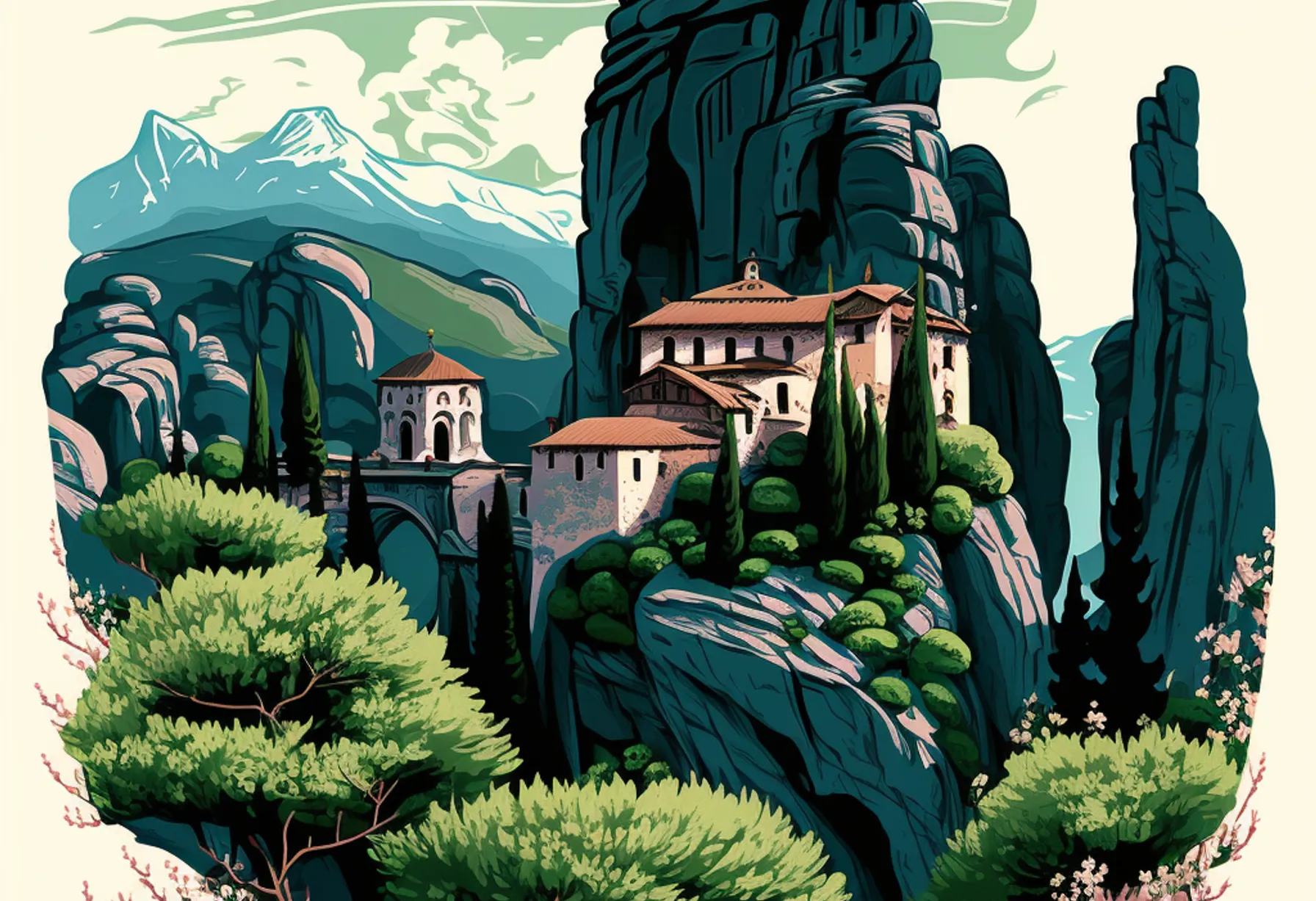The Meteora of Thessaly, in Greece

A beyond where monasteries hang suspended in the sky…
The History of Meteors
If your son falls asleep like mine under a starry sky, he will tell you that a meteor is a luminous phenomenon of the same kind as a shooting star. Specifically, it occurs when a solid body from space falls into the atmosphere. It's no wonder then that the inhabitants of Thessaly, a region north of Athens, used the term meteora to describe these stone sentinels. Nor is it surprising that they adhered to the legend according to which these rocks were sent to Earth so that ascetics could withdraw and pray. Let's explore the history of one of the most beautiful sites in Greece.
According to geographers, the emergence of these geological formations, which peak at several hundred meters high, dates back to about 60 million years ago! If we listen to historians, the inhabitants would later have taken refuge in their crevices during the Celtic and Ottoman invasions. Subsequently, Orthodox monks built places of prayer at the top of the meteors. Using baskets connected to pulleys, they apparently transported men and goods; they did not build stairs until 1920!
According to geographers, the appearance of these geological formations that reach heights of several hundred meters dates back to about 60 million years ago
Nowadays, these places have not lost their soul, not to mention the frescoes and icons of post-Byzantine art made with fine gold. Fortunately, the still active monasteries are listed as UNESCO World Heritage Sites and are protected as such. Only 6 out of the 24 existing monasteries are open to visitors. Spread over a 17 km loop above the village of Kalamanka, they will astonish you. While they mainly welcome summer visitors, I personally recommend seeing them in the quiet of the snow for a greater spirituality...
The Great Meteor
Let's rise above at the Great Meteoron, otherwise known as the Monastery of the Transfiguration. It was built on a platform 600 meters above the ground and consequently offers a breathtaking view! It was founded in 1356, then remodeled and expanded afterwards. However, it enjoyed its greatest days in the 16th century when Theophanes the Cretan created incredible frescoes there. Coming from Mount Athos, this painter made his mark in Thessaly, and you will recognize his work by the bright colors he uses, which give his work a certain vivacity.
Varlaam
If you wish to elevate your soul, you will need to climb 197 steps and you will visit the second largest monastery in the region, which has housed monks again since 1961. Two brothers chose to practice asceticism there, and soon they were joined by their whole family! In addition to the museum that contains reliquaries placed in the former kitchen, you will notice the presence of a hoist dating from 1536! Finally, do not miss the barrel located in the cellar with a capacity of 13,000 liters!
Agios Nikolaos
Indeed, the approach march is carried out in rugged terrain but through undergrowth! You will remember this monastery on 3 levels for several reasons. On one hand, Théophane signed his monogram at the bottom of his frescoes, which was unusual. On the other hand, it endured a turbulent history. At the turn of the 20th century, it was virtually abandoned and had only 5 monks left. In 1941, it was bombed, and of course, its frescoes have been beautifully restored!
Roussanou
Now I take you to the monastery of Saint Barbara. Have you ever seen a more perched, more confined place of prayer? Let me explain... Here lived the stylites, hermits from the early days of Christianity who placed their cell at the top of a column. Thus, they could get closer to God for prayer. This uncomfortable position prevented them from sleeping; they were meant to pray day and night! Moreover, this monastery has another peculiarity: a nun restored it after raising funds from Greeks exiled in the United States!
Holy Trinity
Aghia Triada or the Trinity. Without even knowing it, you have glimpsed the 140 steps that pilgrims climb in the James Bond "For Your Eyes Only" starring Roger Moore and Carole Bouquet. It is by means of a cable car that the monks, for their part, reach the monastery today. If this place enjoys a special aura, it is because it is the oldest (14th century). The Nazis even plundered its treasure, although it seemed safe in a niche of its chapel.
Here lived the stylites, hermits from the early days of Christianity who placed their cells at the top of a column.
Agios Stefanos
Right next door is Agios Stefanos or the Holy Monastery of Saint Stephen, referred to as the "royal convent". This time, it’s a modern structure that will allow you to reach the meteor! Moreover, you will be surprised to learn that it is a nunnery. In this regard, they manage an icon workshop that you can very well visit. The Catholicon (church) contains relics of a saint that are displayed during processions, but I won’t tell you more… You will contemplate the iconostasis, an extraordinary proliferation of animals and plants that took 10 years of work!